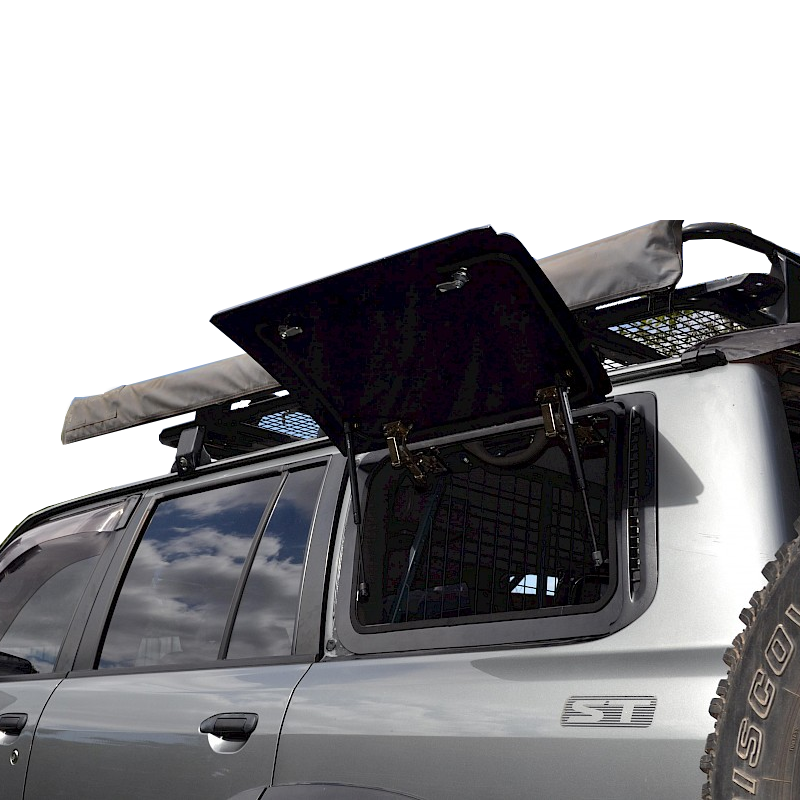Packing Your 4wd At The End Of A Trip
So you’re out on your first camping trip and you can’t quite work out what’s going wrong. Everything was neatly stored in the vehicle when you left home, but now you’re packing up to leave your third campsite and it’s all a bit different. All your sleeping bags seem to have grown into duvets. Soot from the stove has ended up on the tent. You can’t find all the bits of the mozzie net. And what’s that dripping from the rubbish bag onto your spare clothes?
Don’t worry – much – because you’re not alone. Actually it’s okay to worry a little bit, because if all that loose gear starts flying around it could be a safety hazard, so get yourself a cargo barrier. Then start thinking about how to keep everything organised when you’re touring.
The biggest issue is usually being in too much of a hurry to get packed up and hit the trail. If you just throw everything in the back of the wagon it’s going to end up in a mess, and you’ll never be able to find anything. You need to work out a load plan and stick to it. That way when you need something you’ll know exactly where it is. When you put something back in the vehicle put it in the same place you took it out from, and pack it all up properly, too. Put gear like sleeping bags and tents back in their stuff sacks instead of just shoving them into a corner “to dry out.” They won’t, and they’ll soak the rest of your stuff too.
It’s best to keep things sorted by function, so for example store all your cooking gear in one place. The simplest way to do that is get some plastic crates and use them to stow everything. That’s not always the best use of space though, and it can be tempting to just throw stuff in the nearest crate when you’re in a rush. There are some better solutions for 4wd touring.
First, think about getting a drawer system. These keep stuff secure and organised, but easy to get at. The most popular models have two side by side drawers and leave you with a solid flat surface on top that’s ideal for bulkier items. They also keep dust and insects out of your gear. A popular option is a drawer system with a fridge slide. That keeps your fridge neatly out of the way until you need it.
Another handy item is a ready-built kitchen. These include a stove, sink, water pump and storage for all your cooking gear. There are two styles – tailgate mounted and pull-out. The tailgate ones are more compact, but you need to make sure the tailgate can stand the extra weight as you crash through rough ground. Pull-out ones eat more of your cargo space but usually have more features.
Roof racks are the perfect place for bulky gear, because they give you loads of extra space. Watch out though – they’re not ideal for heavy stuff, because that will affect your centre of gravity and increase the chances of you rolling over. Tents, sleeping bags and personal baggage will sit nicely up there though. Of course everything will be exposed to the elements, so make sure it’s all securely packed. You could get some cheap plastic storage boxes, but these don’t last very long in rough conditions. You’re better getting some proper packing cases designed for 4wd use.
Water is essential in the outback. The problem is it’s also heavy, so you don’t want to be loading your roof rack with a dozen jerrycans. You can fit a few in the back, but adding a water tank to your vehicle is a better option. They’re pretty cheap and let you carry 100 litres or more. Some can be fitted inside the bodywork or cargo compartment; others go under the chassis, but if you go for that option make sure to install a bash plate or it won’t last very long.
Taking a couple of bikes with you is a great idea – it lets you get out to explore without tearing down your awning and firing up the wagon. Bikes are bulky though, so either stow them on the roof rack or get a bike rack that mounts outside the tailgate.
Spending a bit of time planning your storage will make it a lot easier to set up and take down your camp, keep you more comfortable, help avoid accidents and extend the life of your vehicle and gear. It’s definitely worth some attention.







